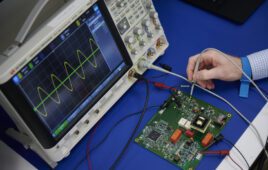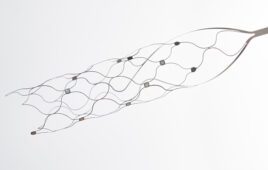Paragonix co-founder and CEO Lisa Anderson offers advice for other device developers as her startup helps organs safely ship to recipients.

Paragonix Technologies co-founder, CEO and President Lisa Anderson [Photo courtesy of Paragonix Technologies]
“What I was looking at at the time was a pancreas that was stored in a couple of sterile plastic bags filled with a solution, and then literally placed in a cooler filled with crushed ice,” she recalled. “To me, that was a very archaic way of transporting a precious human organ.”
So she called the agency that provided the organ and asked whether next time they could package the pancreas just as they would for a human transplant.
“There was a long pause on the line, and they said, ‘Yeah, we kind of did,'” Anderson said.
More than a decade later, Anderson is co-founder, CEO and president of Cambridge, Massachusetts–based Paragonix Technologies. Paragonix won FDA clearance for its latest device, the Baroguard donor lung preservation system, in August 2023 and announced its first-in-human case within three months.
In an interview with Medical Design & Outsourcing, Anderson looked back on her decision to leave academia and develop technology that maximizes the chance that an organ donor’s gift can be used as intended.

This cutaway illustration shows the interior of the Paragonix Baroguard system for transporting donor lungs. [Illustration courtesy of Paragonix Technologies]
“My background was not in transplantation, nor was it in medical devices or technology,” Anderson said. “… I was doing my research at the Broad Institute and MIT and Harvard Medical School, and thought, ‘This is a huge problem. Why has nobody designed and come up with a device to transport organs better than how I transport fish from the beach?’ I became obsessed with the problem and couldn’t stop thinking about it.”
For nearly a year, she shadowed donation and transplant teams in Europe and the U.S. to understand the process end-to-end, from the timing to logistics and the complex medical needs. She returned to Boston, built an engineering team and asked them to beat a box of ice without making the process longer, more complicated or cost-prohibitive.
“Those engineers were looking at me like, ‘That seems like an impossible task,’ because ice is abundant. It’s everywhere. … The thought of introducing technology into this complicated process was quite daunting,” Anderson said.
Today, nearly half of all donor hearts and a third of all lungs are transported using Paragonix products, she said, and her team’s market share continues to climb.
“We’re seeing a pattern that we are able to change the standard and create a new standard in thoracic and also in abdominal,” she said. “… We not only want to make a simple device, but we also want to take clinical leadership by improving outcomes with our product.”
How Paragonix devices preserve organs in transit

Paragonix says its BaroGuard system is the first commercially available hypothermic preservation system equipped to automatically calibrate the airway pressure of donor lungs during transportation. [Illustration courtesy of Paragonix Technologies]
Paragonix’s devices employ a passive temperature maintenance system that uses proprietary, phase-change technology called SherpaCool to precisely regulate temperature without a power source that could fail or batteries that could run down.
“We have zero room for failure. We cannot have a technology on the market that has the potential to not turn on,” Anderson said.
Anderson declined to say more about the SherpaCool technology other than that they’re third-generation, solution-type materials developed in collaboration with another company specifically for organ transport. In one study, researchers said the material changes phases around 41° F.
That phase change technology works with containment systems, insulating systems, monitoring systems and a streamlined process to easily get the donor organ in and out of the device. The Baroguard system for lungs keeps them inflated at a static pressure of 12-15 cm of water pressure to avoid damage from overinflation or underinflation.
These single-use organ transport devices have disposable layers for sterility at the site of donation and transplantation, as well as sensors to monitor and transmit the organ’s status and location in real-time, tracking how long it’s been without blood.
“What makes our product successful is a comprehensive view of how we transport that organ, in what environment, and who are the stakeholders of an organ transport,” Anderson said. “That coming together is really giving us an edge here in the market.”
Advice for other device developers

This cutaway illustration shows the interior of the Paragonix SherpaPak cardiac transport system. [Illustration courtesy of Paragonix Technologies]
“Keep it simple, and make sure that you actually have a simple solution as you enter a market where you might be the first product on the market and creating a new product category, which is what we did,” she said. “And I think that that simplicity and intuitive use contributed largely to our success.”
She also advised device developers to collect as much patient data and clinical data as possible, because the investment will pay off.
“It’s not only to drive sales and revenue and continued value proposition, but also you need to be the expert of your device on what it does in patients and think of that patient first,” she said. “And the only way to do that is to invest heavily, intensely, and over a multiyear period into real-world evidence and data that you can get from the patients that you serve as a company.”




